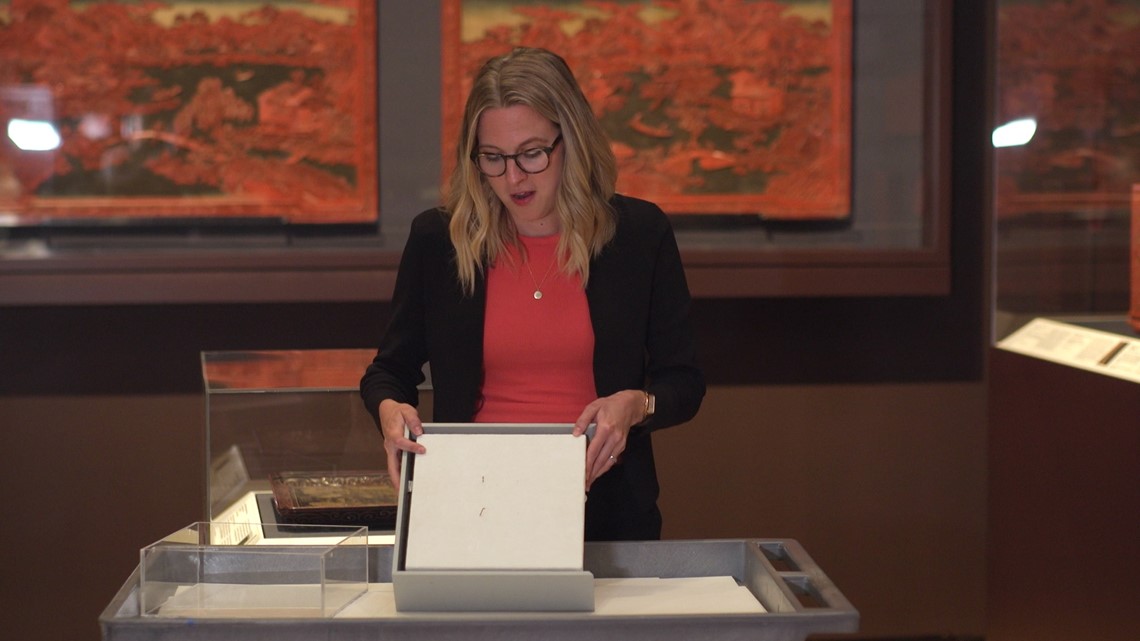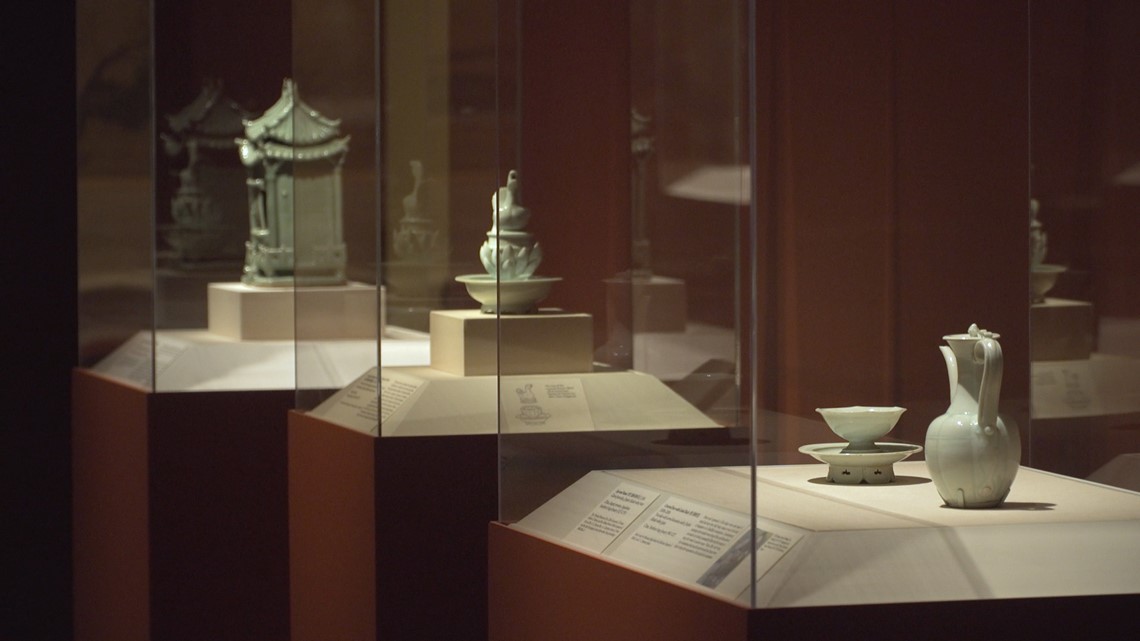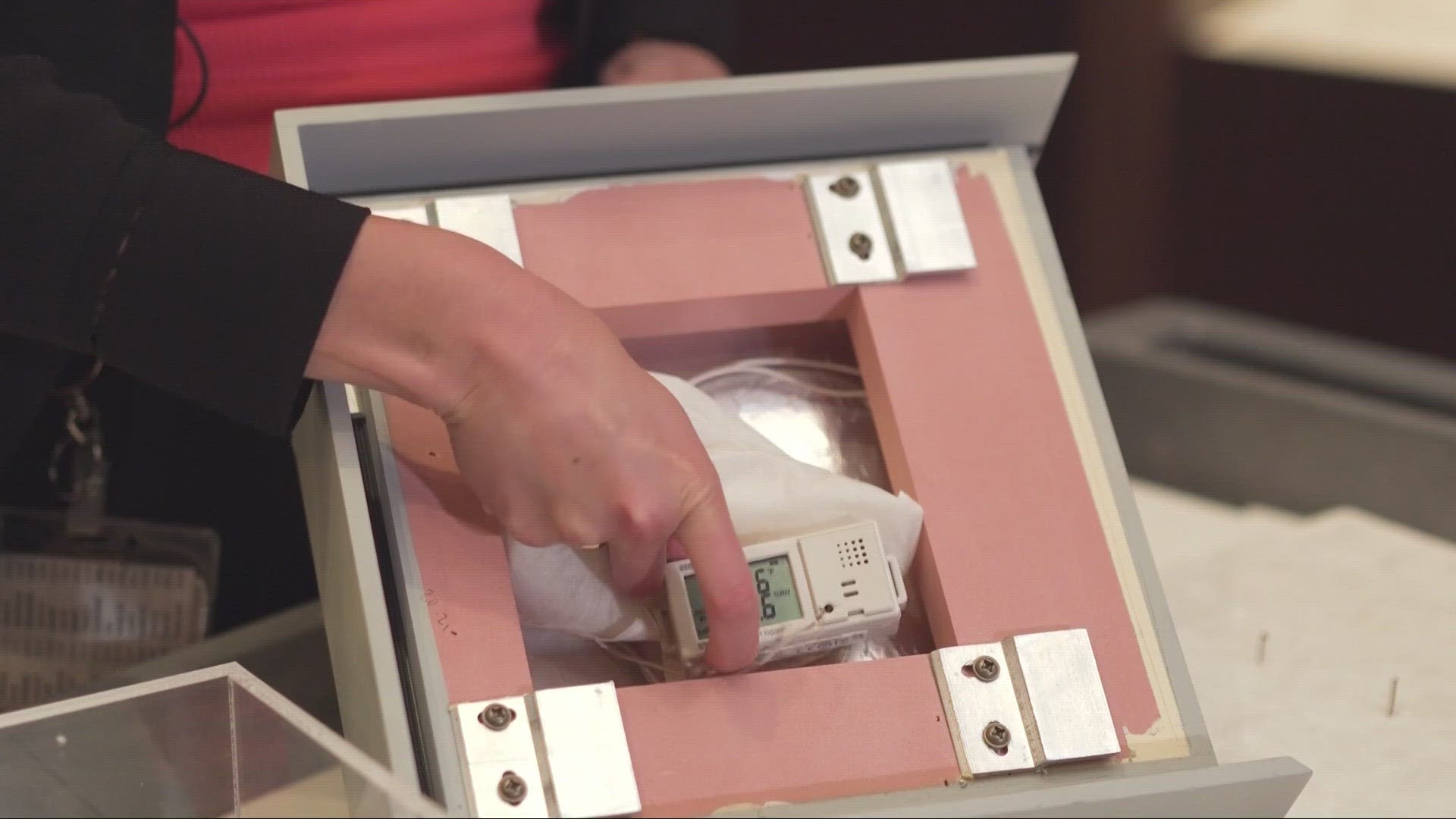CLEVELAND — A brand-new exhibit debuted this week at the Cleveland Museum of Art!
China's Southern Paradise is curated from over 30 international collections.
It explores historical and cultural riches south of the Yangzi River. The exhibit - three years in the making - is the first of its kind in the Western World. And some of the pieces have never been shown in public before.
Bringing it together took painstaking work at the Cleveland Museum of Art.
"My whole responsibility here is trying to ensure that our artworks are not degrading or deteriorating in any way," explains Laura Resch, who has the role of assistant preventive conservator.
She makes certain humidity requirements of each piece on display - are met. That starts with the cabinets. All are made on site.
With over 200 pieces, this exhibit marks the largest amount of casework Resch and her colleagues have ever tackled.
"I had a lot of chemistry in my school background, and as I've worked throughout my career, I've ended up learning a lot about the physics of how air and humidity move inside of casework and how that affects different sorts of materials," Resch said.
Hidden inside each case, a compartment housing materials to keep the artwork safe, like a bag of silica gel, just like you find in a box with new shoes. Except Resch creates these packets herself, using this following equation that puts her math and physics skills to the test:
- Q = (Ceq D)V(Nt)/( MH F)]*
- Q = Kilograms of silica gel required.
- Ceq = Concentration of water vapor at saturation.
- D = The differential between the external RH and RH within the exhibit case.
- V = The volume of the case, expressed in cubic meters.
- N = The number of air exchanges per day.
- t = The maximum number of days that the exhibit case should remain within an acceptable range of RH.
- MH = The moisture buffering capacity of silica gel within the specific RH range of use, taking hysteresis into account.
- F = The acceptable maximum range of RH fluctuation within the exhibit case.
* attributed to: Steven Weintraub, Art Preservation Services


"Anytime I have a display case, I need to figure out what the air volume is within that case. And then I'm running the numbers to figure out how much silica gel I need to hold a particular environment," Resch said.
Also inside each compartment -- a data logger, tracking humidity levels continuously. Any changes are immediately sent to Resch.
"I have an app on my phone and I can keep an eye on the temperature and humidity and a whole number of cases all throughout our campus," she added.
Though visitors will marvel at these delicate international treasures, dating back hundreds of years, increasingly it is the role of scientists and mathematicians to ensure exhibits like China's Southern Paradise are preserved for the generations that will follow.


"There's a lot of research happening all the time in the field of conservation to try to help us figure out how to best care for artworks and preventive conservation is a part of that," Resch said.
Below are opportunities to learn more about Art Conservation, STEM careers and more:

